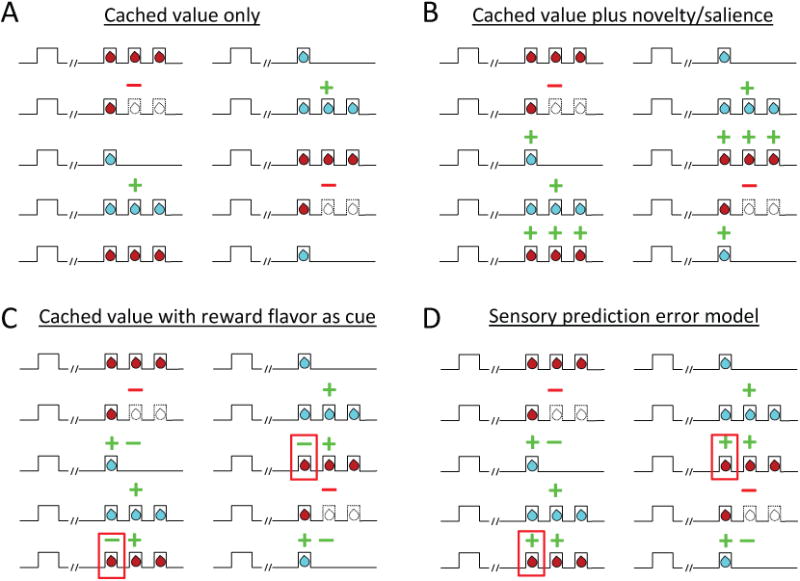Figure 5. Schematic illustrating different ways that error signals might appear in response to changes in reward number and identity in the behavioral design reproduced from Fig 2, depending on what information dopaminergic errors reflect.

(A) If dopamine neuron firing reflects errors in cached value only, then the conventional prediction would be increased firing only to the second drop of the big reward and decreased firing only on omission of this second drop of reward, since these are the only places in the design where cached value predictions are clearly violated. (B) If dopamine neuron firing reflects errors in cached value plus a novelty bonus or salience, then the prediction is for the same cached value errors shown in panel A on number shifts, plus increased firing to each drop of reward after an identity shift, assuming the unexpected flavor of each drop is salient or novel. (C) If dopamine neuron firing reflects errors in cached value, based on both the odor cues and also the sensory features of the first drop of each reward, then the prediction is for the same cached value errors shown in panel A for number shifts, plus a mixture of increased and decreased firing to identity shifts dependent on cached value accrued by the first drop's flavor in the prior block. For example, when chocolate was the small reward previously and becomes the large reward, one would expect the first drop to evoke decreased firing because it would be less valuable than expected (since its flavor predicts no more drops), followed by increased firing to subsequent drops because they would be unexpected. This again assumes the rat is using the flavor of the first drop to make predictions about subsequent drops. Note this does not apply if the two wells deliver similar amounts of different rewards, and as illustrated in Fig. S2, dopamine neurons also exhibited errors in response to identity shifts under these conditions. (D) Finally if dopamine neuron firing reflects errors in the prediction of sensory information or features, either instead of or in addition to cached value errors, then the predictions are for increased firing to unexpected events generally and decreased firing to their omission. See text for full description. (green = positive errors, red = negative errors, red boxes highlight only place of divergence of predictions between C and D)
